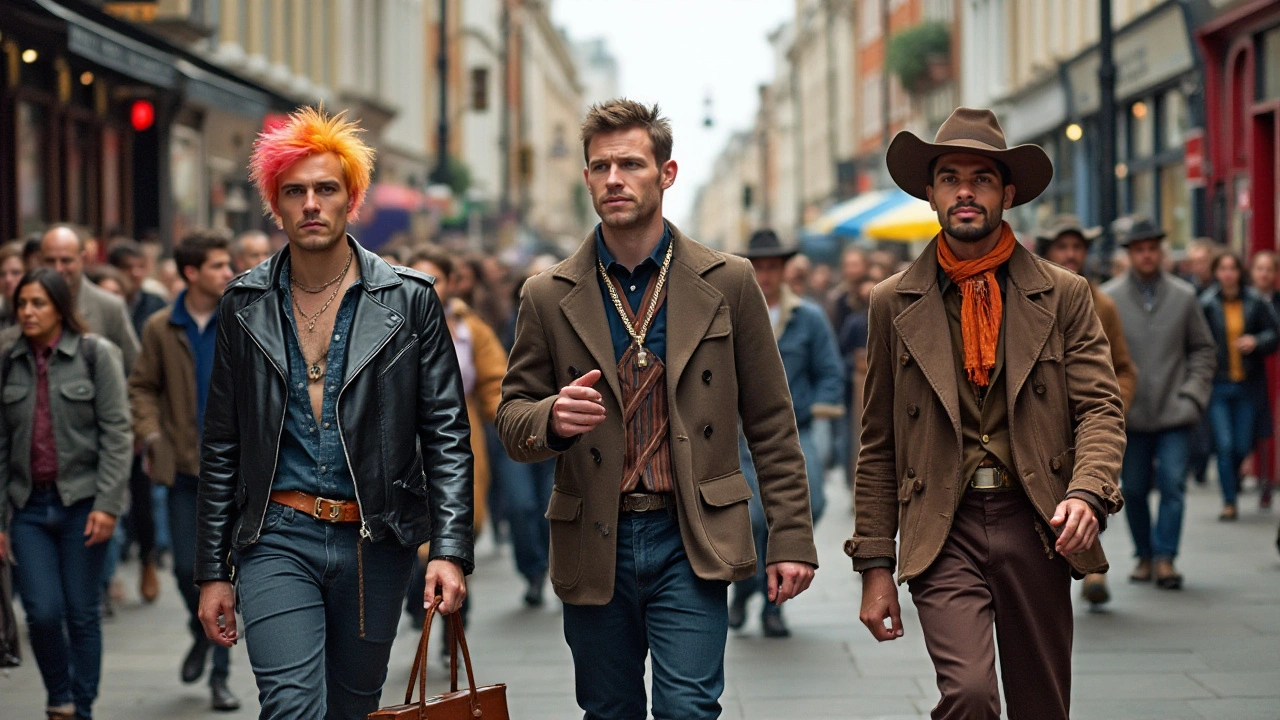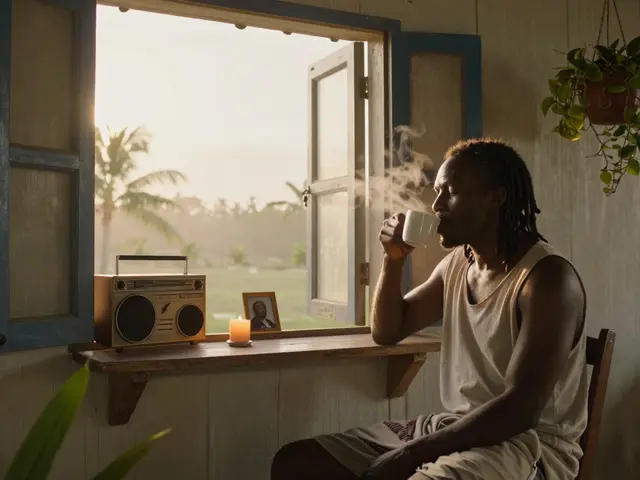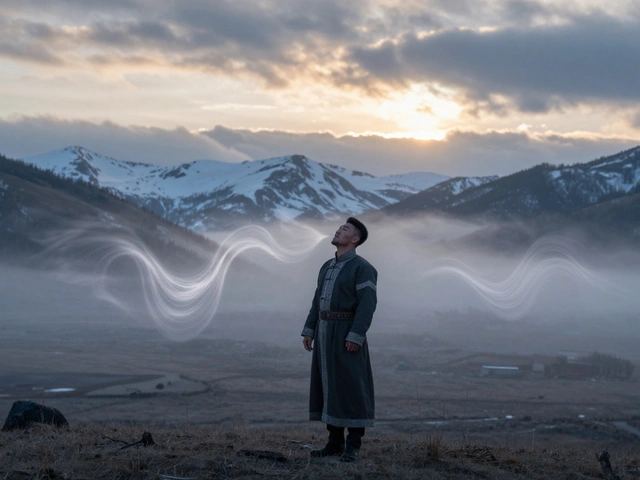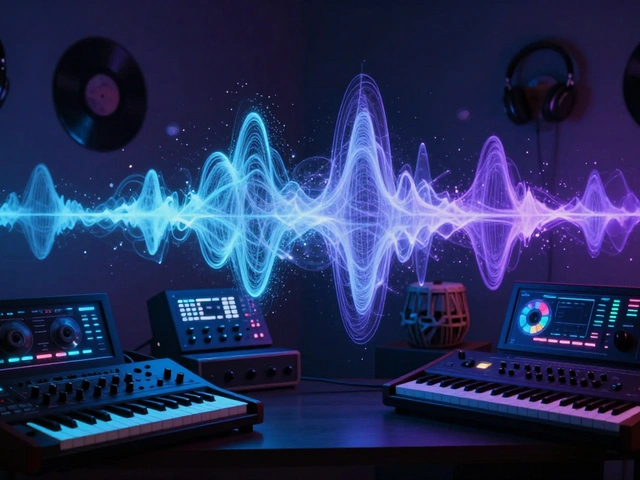Music breathes life into every corner of our existence, carrying echoes of who we are, where we’ve been, and where we are headed. It serves as a vibrant soundtrack to our daily lives, steeped into the fabric of society and culture. From the rhythmic beats of African drums to the poetic verses of hip-hop, music genres encapsulate the essence of entire eras and movements.
In this exploration, we delve into how music genres shape and define popular culture. Music is not just an art form—it's a cultural catalyst, molding and re-molding the world around it. The impact of music extends beyond sound waves, influencing what we wear, the language we speak, and the causes we champion. By nurturing creative expression and innovation, music genres also inspire identity and individuality across generations.
- The Evolution of Music Genres
- Music as a Cultural Ambassador
- Fashion and Music: A Symbiotic Relationship
- The Role of Music in Social Movements
- Language and Slang Influenced by Music
- Impact of Music on Individual Identity
The Evolution of Music Genres
The tapestry of music genres is as old as time, evolving with humanity itself, reflecting societal changes and technological advancements. From the haunting notes of ancient civilizations to the digital beats of today's electronic music, each era of music tells its unique story. The roots of music can be traced back to the rhythmic hum of prehistoric anthems, where humans first discovered the magic of sound using rudimentary instruments. As civilizations grew, so did the complexity of music, giving rise to classical compositions which laid the groundwork for modern music theory.
In the Renaissance period, music began to flourish with unprecedented creativity. Polyphonic textures woven in choral and orchestral compositions elevated the art form, setting the stage for the magnificence of the Baroque and Classical periods. Johann Sebastian Bach and Wolfgang Amadeus Mozart were not just composers; they were cultural pioneers, influencing countless artists and musicians in generations to follow. The transition to the 20th century ushered in an array of musical expressions, giving birth to jazz—a rebellion against structure and form, celebrating improvisation and emotion.
The advent of recorded music in the early 1900s marked a turning point, forever altering popular culture. For the first time, music became an accessible commodity, no longer confined to concert halls. As radio and vinyl records rose in popularity, so did the idea of music genres shaped by cultural and social dynamics. The emergence of rock 'n' roll in the 1950s became a cultural revolution characterized by electric guitars and youthful exuberance. It broke social norms, defied expectations, and inspired an era marked by bold fashion and political activism.
Moving forward, the diverse landscapes of pop, hip-hop, and electronic music carved out their places in popular culture. Icons like Madonna and Tupac not only created music but also embodied the spirit of their respective genres. Each genre became a vessel for storytelling and self-expression, projecting the collective voice of their communities. It's interesting to note how technological innovations such as synthesizers and digital software have continuously transformed music production, enabling genres to blend and evolve into sub-genres like synth-pop and trap music.
As music continues to transcend boundaries, newer genres like K-pop have turned into global phenomena. This fusion of colorful visuals and catchy beats indicates music’s boundless adaptability in the face of cultural cross-pollination.
"Music in the soul can be heard by the universe," philosopher Lao Tzu once said, highlighting music’s unparalleled power to connect humanity across time and space.Today, online streaming and social media platforms have democratized music consumption and participation, giving rise to viral sensations and niche genres that redefine what music means in the digital age.
Music influence on cultures is not a new concept, yet the ways in which it resonates within and beyond traditional boundaries are ever-unfolding. As we peer into the horizon, the future of music genres remains a colorful mosaic enriched by diversity and innovation. In this journey through time, music continues to narrate the stories of our collective human experience, adapting and thriving within the rhythmic dance of change.
Music as a Cultural Ambassador
Music has long held a pivotal role as a cultural ambassador, weaving itself seamlessly into the societal fabric to deliver messages of joy, resistance, hope, and change. As one of humanity's most compelling storytelling mediums, music transcends language, reaching across borders and cultures to unite diverse groups through shared experiences. It is this universality that grants different music genres the power to bridge cultural divides. From the melodic strums of sitars in Indian music to the pulsating rhythms of Latin salsa, each genre tells stories that reveal cultural histories and past struggles, enhancing empathy and understanding among listeners worldwide.
The influence of music genres on cultural identity and representation can be seen vividly in how certain genres are synonymous with specific regions or groups, serving as soundscape ambassadors. Consider reggae, deeply rooted in Jamaica, exporting themes of unity and resistance through revered figures like Bob Marley. His anthem of 'One Love' beckons global unity and is recognized across continents. Jazz originated in the African American communities of New Orleans, acting as a voice of resilience and innovation, and spreading its improvisational magic worldwide, impacting places as distant as Japan, where it sparked entire jazz subcultures.
Music not only conveys what is heard but also shapes how societies express themselves visually and behaviorally. Popular culture is replete with instances where music inspired global fashion trends, including punk’s gritty, rebellious style or hip-hop’s blend of baggy clothing and sportswear. The way music communicates culture is so profound that at times it is institutionalized, as seen with UNESCO’s designation of certain music genres as parts of the world's intangible cultural heritage. An example is Flamenco, which represents Spanish culture and carries centuries of history and passion in every strum and stomp.
"Music can change the world because it can change people." – Bono, lead singer of U2, captures the essence of music's potential to enact global change and serve as a cultural bridge.
With festivals like Womad and Global Citizen Festival, music offers platforms for cross-cultural exchange, giving audiences a taste of the world’s musical diversity and promoting global citizenship. Here, genres converge, allowing shared cultural dialogues rooted in diverse rhythmic signatures and stylistic nuances. Such events underscore how genres can advocate for global causes and foster a greater sense of unity among individuals from all walks of life. The role of music as a cultural ambassador is expansive, continually evolving as new genres emerge and artists push creative boundaries to reflect their unique cultural landscapes.
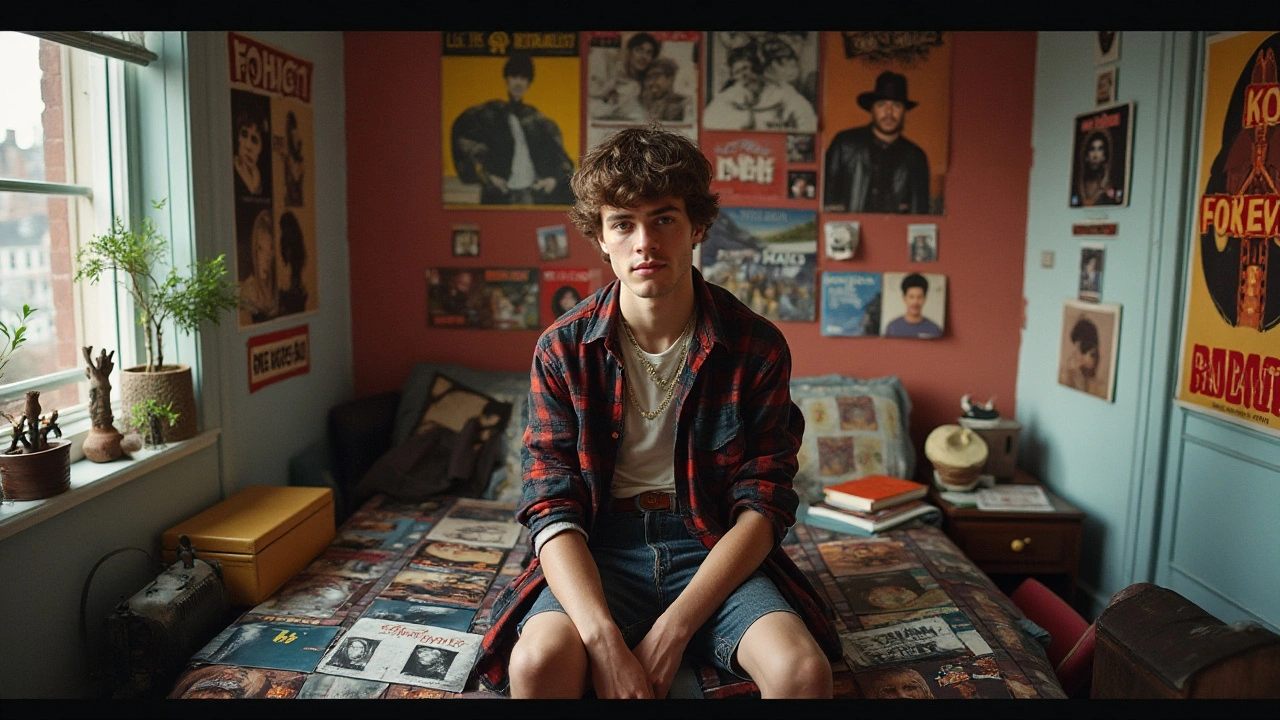
Fashion and Music: A Symbiotic Relationship
Fashion and music have been intertwined for decades, each influencing and enhancing the other in ways that shape popular culture. The impact of different music genres on fashion is unmistakable and profound. From the sharp suits and skinny ties of the Mod movement inspired by British rock bands in the 1960s to the hip-hop fashion explosion in the late 20th century, music has always had a significant influence on what people wear. It isn't just about borrowing elements—fashion allows music's essence to manifest visually across social strata, personalizing tastes and weaving music’s intangible nuances into the fabric of daily life.
Fashion designers often turn to music influences to capture the energy and vibe of a given era or album. The runway becomes a stage for these influences, with designers like Vivienne Westwood and Jean-Paul Gaultier integrating punk and rock aesthetics into their collections. These genre-specific styles transcend the music industry, turning concert goers and fans into cultural icons with defined looks. The iconic leather jackets of the rock-and-roll era, the glitzy glam rock styles, and the oversized streetwear of the hip-hop scene serve as testaments to music's impact on the broader cultural wardrobe.
The synergy between these two creative outlets also finds expression in music videos and live performances. Artists such as Madonna and Lady Gaga aren't just pop stars; they are fashion pioneers who reshape what stage presence and personal style mean for millions worldwide. They're aware that the visual is as impactful as the aural, creating outfits that become inseparable from the tunes themselves. From David Bowie's androgynous ensembles to Elvis Presley’s all-American ruffles, fashion, like music, often challenges societal norms, opening dialogues around identity and self-expression.
To quantify this relationship further, a glimpse at the economics could be revealing. According to a report by Nielsen in 2022, music-driven fashion sales saw an increase of 15%, primarily influenced by collaborations between high-end fashion brands and popular music artists. The business isn't just about fabric and stitches—it's a commerce built on the ethos and stories music encapsulates. These partnerships push fashion forward, offering limited edition lines that draw lines outside sartorial conventions, reminding consumers of music's commercial power in shaping style.
"Music and fashion are like two peas in a pod. Both are expressions of who we are and how we feel at a moment in time," Yvonne Hernard, a well-known fashion critic, describes this dynamic duet, underscoring their inseparability. When a band hits the stage, their attire, like their sound, talks to their audience, creating waves that ripple through time.
If we take this understanding through the lens of popular culture, it becomes clear that the reciprocal relationship between music and fashion acts as a mirror reflecting the dynamic shifts within society itself. Whether it's the transformative power of a beat or a bold pair of heels, the marriage of fashion and music continues to express a shared humanity—a testament to our ever-evolving style and sound.
The Role of Music in Social Movements
Music has always been a powerful tool in mobilizing social movements, providing both inspiration and a voice for change. Throughout history, different music genres have emerged as significant players in advocating for social justice and unity. During the Civil Rights Movement, genres like gospel, soul, and folk were vital in uniting individuals around a common cause. Iconic songs such as Bob Dylan's 'Blowin' in the Wind' transcended racial boundaries and inspired a generation to push for equality. These songs weren't just entertainment; they were anthems for courage and resilience, echoing the struggles and hopes of society. Music created a safe space for expressing ideas that were often suppressed, promoting not only solidarity but also understanding.
In more recent years, hip-hop and rap have continued this legacy, addressing issues such as police brutality, systemic racism, and inequality. Through crisp beats and poignant lyrics, artists like Kendrick Lamar and Childish Gambino have brought attention to pressing societal issues. Hip-hop acts as an unfiltered reflection of modern life, frequently challenging established norms and encouraging dialogue. The genre’s impact is further amplified by its ability to connect with global audiences, transcending cultural and geographical boundaries. Indeed, music serves as a universal language, offering a platform for marginalized voices to be heard loud and clear.
"Rap is something you do; hip-hop is something you live," as expressed by KRS-One, underlines the profound cultural impact of these music genres.
Beyond individual movements, music plays a larger role in societal transformation by inspiring collective action and social cohesion. It acts as a catalyst, prompting people to think deeply about pressing issues of the day. Take, for instance, the Live Aid concert in 1985 which brought together over 1.5 billion people worldwide, raising millions of dollars for famine relief in Ethiopia. This event demonstrated the incredible unifying power of music, proving once again its ability to change the world. From galvanizing youth to supporting major political shifts, the enduring relationship between music and social movements highlights its impact on popular culture. In many ways, music has been there at the forefront, ringing the bells of change and evolution, echoing the heartbeat of revolution.
In recent times, artists have harnessed digital platforms to spread their message further. Social media and streaming services have provided a gateway for musicians to engage directly with audiences, sharing not just music but entire movements. This reach offers more dynamic opportunities for musicians to lead campaigns and influence societal discourse. The expanding realms of these platforms are ushering in a new era where musicians can effectively command global attention, making indispensable contributions to the pulse of social and political movements. Through its enduring legacy, music continues to play a vital role in shaping the world, ensuring that the collective voice of the people is heard and that change remains an ever-present rhythm in the symphony of life.
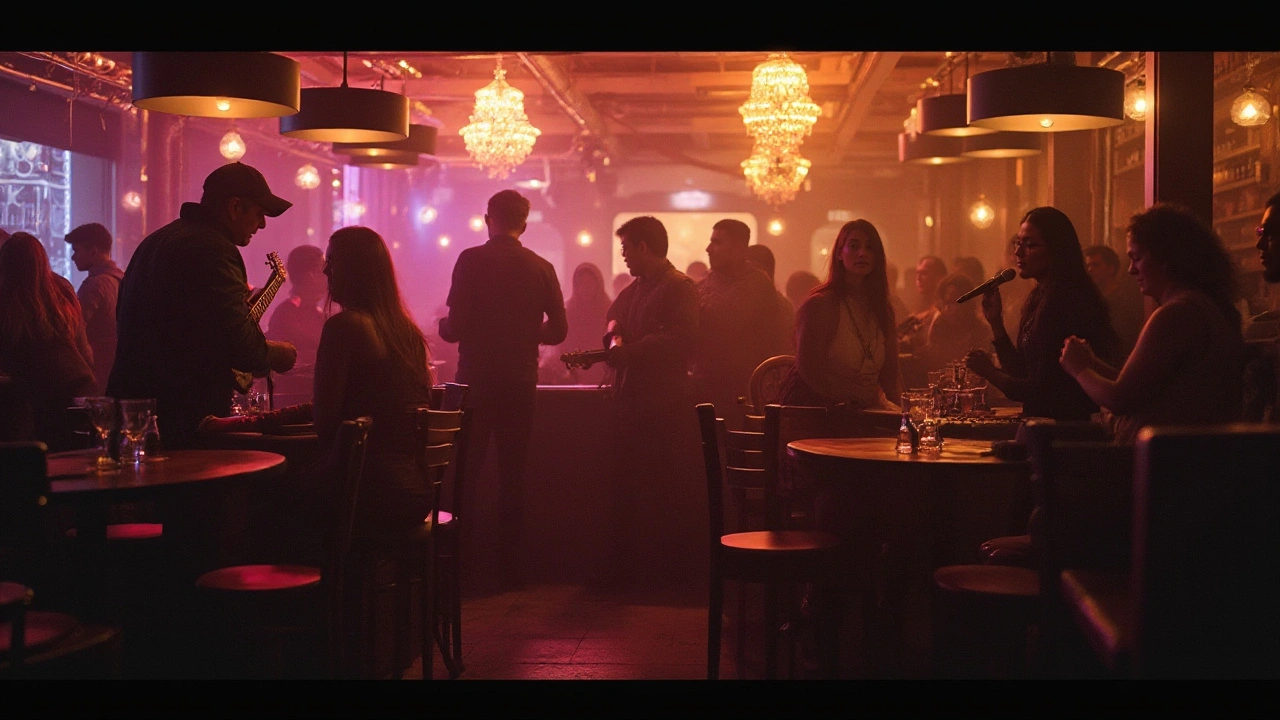
Language and Slang Influenced by Music
Language evolves just as music does, and the two often advance hand in hand, carving out new avenues of expression. Music genres have a remarkable influence on our vernacular, introducing phrases and sayings that transcend their original contexts to become mainstream. This symbiotic relationship between music and language is particularly evident in genres like hip-hop, where artists craft new slang that becomes widely adopted by fans worldwide. For instance, terms popularized by rappers, like 'bling' to describe flashy jewelry, have entered everyday language. These phrases effortlessly leap from lyrics into our common speech, showcasing the power of music to reach beyond melody and rhythm into everyday dialogue.
The impact of music on language is not a recent phenomenon. Historical music forms, such as the jazz age, introduced a lexicon of rhythm and sophistication, with words like 'cool', 'hip', and 'groovy'. Jazz musicians of the early 20th century embedded these terms into the cultural psyche, creating a lasting linguistic imprint. A fascinating aspect of this influence is how these words adapt, maintaining relevance across different generations even as their associations shift. Words that once exclusively evoked speakeasy glamour now embody an array of meanings, from a general state of being to a lifestyle choice.
“Language is the roadmap of a culture. It tells you where its people come from and where they're going.” — Rita Mae BrownThe phenomenon of music-inspired slang is not limited by geography; it bridges cultural and linguistic gaps. Consider how reggaeton from Latin America provides spicy additions to language, infusing Spanish with rhythmic phrases that catch fire globally. Terms popularized within the genre, like 'dembow,' reflect the infectious beats typical of this music style, spreading beyond borders to become an essential part of the lexicon in areas outside its origin. Such global proliferation of slang through music genres exemplifies their role as cultural ambassadors, uniting diverse populations under a shared musical language.
Beyond specific words, entire phrases and lyrical motifs gain traction and become linguistic staples. Genres like rock and pop are equally influential, with some of the most iconic rock bands contributing repeatedly quoted and reimagined lines. Recognizable references like 'another brick in the wall' or 'Imagine all the people,' originally set to music, now trigger imagery and ideas without needing musical accompaniment. Their seamless integration into public consciousness reflects the deep-seated cultural impact music genres have, enriching not only acoustic landscapes but also our collective vocabulary. After all, language and music are art forms that rely on shared symbols and meanings, evolving together seamlessly over time.
To better appreciate the influence of music on language, let's look at a few intriguing facts:
- Artists like Madonna, known for her continuously evolving style, have coined terms that define fashion as well as language within specific eras, such as 'vogue' from her hit song of the same name.
- The phrase 'Rock and Roll' itself was borrowed from African American vernacular, underlying the intrinsic link between music genres and evolving language.
- The word 'funky', now a staple adjective in English, originated from the jazz scene, illustrating music's role in expanding and reshaping our dictionaries.
In essence, music genres are the undercurrent that propels language into uncharted territories, and as we continue to sing along, we write not just lyrics, but the evolving book of cultural history.
Impact of Music on Individual Identity
Music holds a mirror to our soul, reflecting the depths and nuances of our very being. It is a powerful tool in the construction and understanding of individual identity, offering a safe space for exploration and expression. From teenage angst channeled through punk rock to the soulful introspection found in blues, the genre we gravitate towards often reflects our personal experiences and aspirations. Music provides an avenue for individuals to connect with their inner selves, exploring emotions long buried or rarely acknowledged. This connection can lead to a deeper understanding of one's own identity, values, and beliefs.
Look at the way people often idolize musicians, adopting not just their music but their fashion, attitude, and philosophy. Icons like David Bowie and Prince became champions for those struggling with identity issues, offering a message that it's okay to be different. The styles they embodied transcended traditional genres, speaking directly to individuals in search of self. As music continues to evolve, it consistently redistributes cultural power, giving often marginalized voices a platform to be heard and influencing individual and collective identity growth.
Many studies show that adolescents, in particular, rely on music genres as a primary identity tool. Researchers have found that listening to certain genres can increase self-esteem and even help individuals cope with trauma. Music therapy has been used to assist in healing processes and emotional regulation, proving how impactful music can be in supporting and nurturing individual identities. According to a study published in the Journal of Adolescence, individuals who engage with music in a meaningful way report higher levels of self-awareness and positive identity development.
Music's ability to unify while simultaneously allowing for personal distinction is one of its most intriguing paradoxes. People sometimes form what are known as 'music tribes,' communities made of fans who find commonality in their music tastes. These tribes facilitate the sharing of culture and identity, serving as both a collective and personal platform for expression. Popular culture isn't just about mainstream acceptance; it's a melting pot where unique identities converge, each one contributing a unique perspective drawn from their preferred music genre. In this sense, music becomes a catalyst for diversity and inclusion, encouraging acceptance and appreciation of various identities in society.
In a world where the battle for identity is ongoing, music offers a refuge—an art form that doesn't just entertain but helps to explain, explore, and enjoy the intricacies of who we are individually and collectively. The profound ability of music to shape and influence identity remains indisputable, leaving an everlasting symphony of memories and self-realizations.

